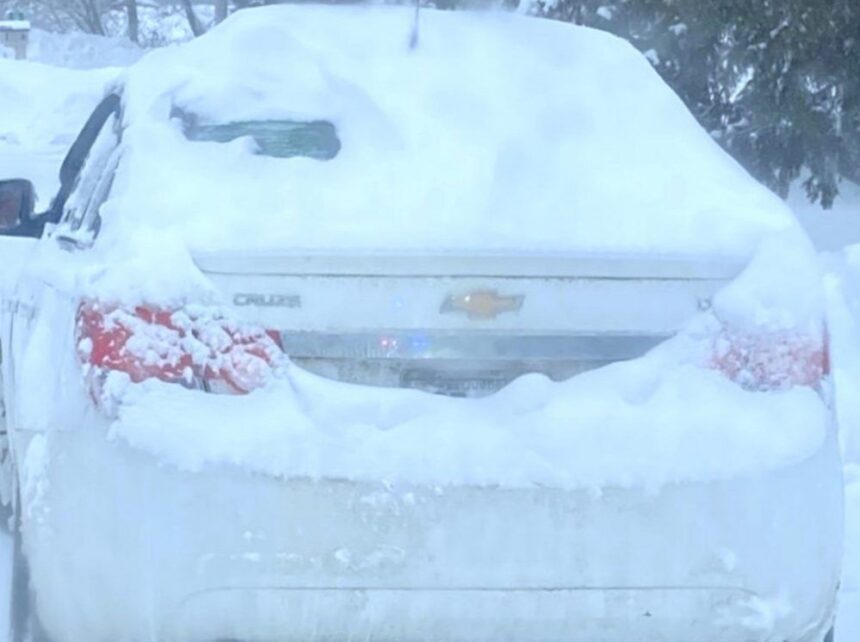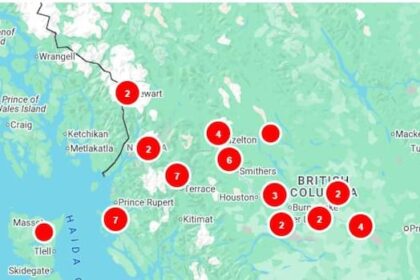Article content“Posted speed limits are (there) for ideal conditions, not icy ones,” he said. “Increase your following distance and avoid sudden movements.”Article contentMcLaughlin also wants to remind motorists that during the winter, that habit of letting drivers on side streets proceed can be a nice gesture, but it can also unexpectedly cause trouble when roads turn icy.Article content“Some drivers will literally stop on their morning commute to allow one of these drivers on side streets to come in,” he said. “But what happens is they’ll stop, and on a two-lane icy highway, you suddenly get rear-ended and, in a lot of cases, you get two or three cars that (get into collisions) because they’re not giving that time and distance that they need.”Article content An example of motorist pulled over by police for driving without properly clearing snow off the vehicle. “I’ve seen in my career all across Canada where people will scrape off their windshields, scrape off the back window, drive, hit the brakes, and the three feet of snow that’s on top of the vehicle come sweeping down right over top of them, causing all kinds of problems,” says Cpl. Gary McLaughlin of the RCMP North-East Traffic Services-Cape Breton division. Photo by MRC DES COLLINES POLICE FILEArticle contentSTART NOW WITH PREPARATIONSArticle contentLast Thursday, snow dropped on such areas as Port Hawkesbury and Mount Thom on the mainland, while parts of Cape Breton experienced a mix of rain and flurries as temperatures dipped to near the freezing mark (Celsius, or near 32 F).Article contentArticle contentMcLaughlin and Tilley said that alone should be a reminder to start now with preparations for winter driving.Article content“It’s common sense, but it’s also people needing that reminder,” Tilley said.Article content“We just had a beautiful summer season. Now we’re heading into a winter season. We’ve already seen some snow in certain areas of the province, and it’s about changing (drivers’) mindsets to move toward that winter preparedness, and getting folks back in that mindset that winter’s coming.”Article content Fred Tilley, minister of Public Works: “I think the speed limits are in the right spots for where they need to be.” Photo by IAN NATHANSON/CAPE BRETON POSTArticle contentNO PLANS TO REDUCE SPEED LIMITSArticle contentTilley said for now, there appear to be no immediate intentions to reduce posted speed limits along Route 4 between Howie Centre in the Cape Breton Regional Municipality and Lynche River in Richmond County — this despite residents attending last Thursday’s meeting in Big Pond raising issue with motorists speeding along the provincially owned trunk route.Article contentArticle content“I think the speed limits are in the right spots for where they need to be,” he said. “Wherever you set the speed limit, there are going to be individuals that drive over that speed limit.Article content“So I think it’s more about enforcement. It’s more about people ensuring that they’re sticking to the rules of the road and driving sensibly and using common sense on our roads and highways.”Article contentArticle contentPREPARING FOR WINTER DRIVINGArticle contentTo prepare for unpredictable winter weather, vehicles should have winter tires, cold-temperature antifreeze and an emergency kit.Article contentOther winter driving tips include: • Wearing seatbelts (seatbelts are required by law all year round) • Slowing down and leaving additional space between vehicles; it takes more time and distance to brake in winter conditions • Keeping the gas tank at least half full • Clearing snow off the vehicle • Planning ahead and allowing extra time for possible delaysArticle content
Prepare for winter driving conditions now, RCMP officer and provincial Public Works minister say












